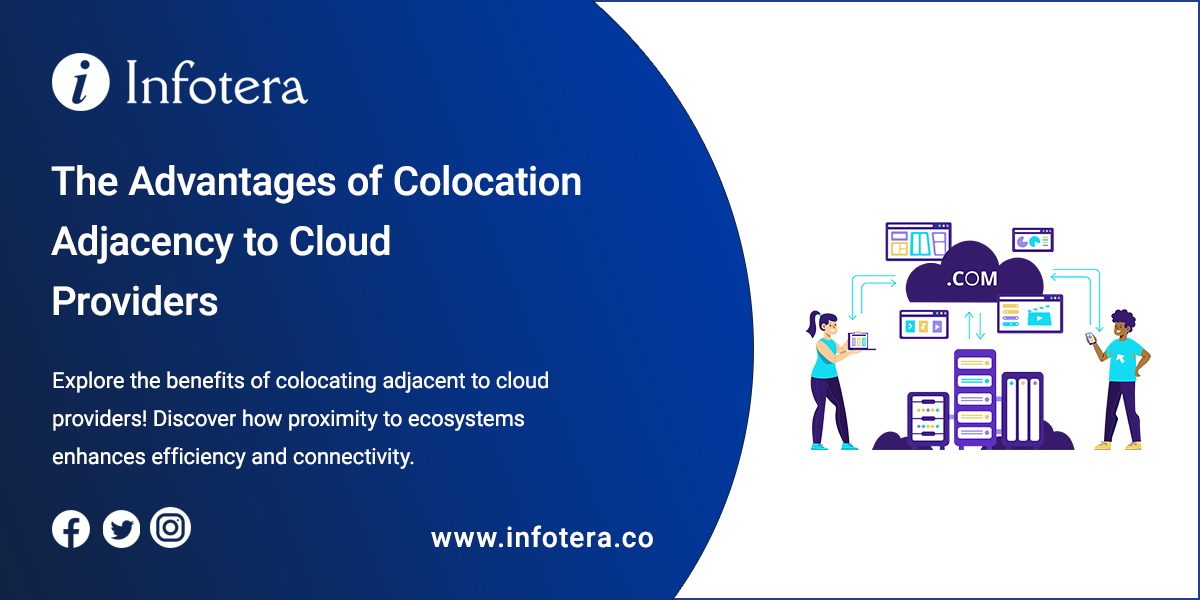Businesses today require IT infrastructure that is scalable, flexible, and offers geographic diversity. This has led many organizations to adopt hybrid cloud solutions, combining colocation with public cloud services. When selecting a colocation provider, proximity to major cloud ecosystems brings significant benefits.
Introduction
Colocation involves housing your servers, storage, and networking equipment within a specialized third-party data center facility. Public cloud services provide on-demand access to IT resources over the internet. A hybrid approach leverages the control of colocation with the scalability of the cloud.
Strategically choosing a colocation provider located adjacent to public cloud nodes offers performance, connectivity, and cost advantages. Let’s explore why ecosystem proximity matters.
Reduced Latency for Faster Performance
Latency refers to delays in data transfer speeds caused by physical distance between locations. It is measured in milliseconds. The shorter the distance between infrastructure, the lower the latency.
With colocation right beside major cloud onramps, data can move faster between your equipment in the colo facility and cloud services. This is extremely beneficial for workloads that require low latency.
High-Capacity, Low-Latency Connectivity
Adjacent colocation enables direct, private connections to cloud services through dedicated fiber lines. This removes traffic from the public internet, providing massive bandwidth scalability with consistent low latency.
Direct connections support burstable capacity levels into the tens of gigabits per second. This high-throughput, low-latency connectivity enhances infrastructure and application performance.
Improved Hybrid Cloud Integration
Close proximity between colocation and cloud allows businesses to efficiently integrate their IT footprint. Hybrid cloud functions like bursting workloads to the public cloud during peaks can happen seamlessly when colocation sits next to cloud nodes.
The reduced physical distance also lowers networking complexity. You can strategically leverage infrastructure across on-premises and cloud in a tightly integrated hybrid model.
Access to Cloud Interconnection Ecosystems
Major colocation facilities double as carrier-neutral interconnection hubs, bringing together hundreds of ISPs, telecom networks, IT service providers, and hyperscale cloud providers.
When colocating adjacent to this dense cloud connectivity ecosystem, you gain access to valuable partnerships that can further enhance hybrid IT resilience and performance.
Cost Optimization Across Environments
Well-designed hybrid cloud solutions allow optimizing spend by intelligently placing workloads in colocation or cloud based on factors like utilization patterns, security needs, and performance requirements.
Proximity improves cost optimization by reducing data transfer fees between colo and cloud. This also allows keeping latency-sensitive data on-premises while leveraging cloud for elastic capacity.
Reduced Data Transfer Costs
One major cloud expense is the egress fees charged for moving data out of the cloud. Data transfer costs are typically based on distance.
By colocating next to cloud nodes, businesses minimize egress fees by localizing data transit between colocation and cloud to the same metro region. This keeps cloud data transfer costs low.
Conclusion
For modern businesses adopting hybrid cloud models, colocation adjacency to hyperscale cloud providers offers valuable performance, connectivity, integration, and economic benefits. The closer your colocation facility is to major cloud ecosystems, the better it can support your dynamic IT infrastructure needs. As your cloud usage grows, proximity and direct interconnectivity will become increasingly important.

